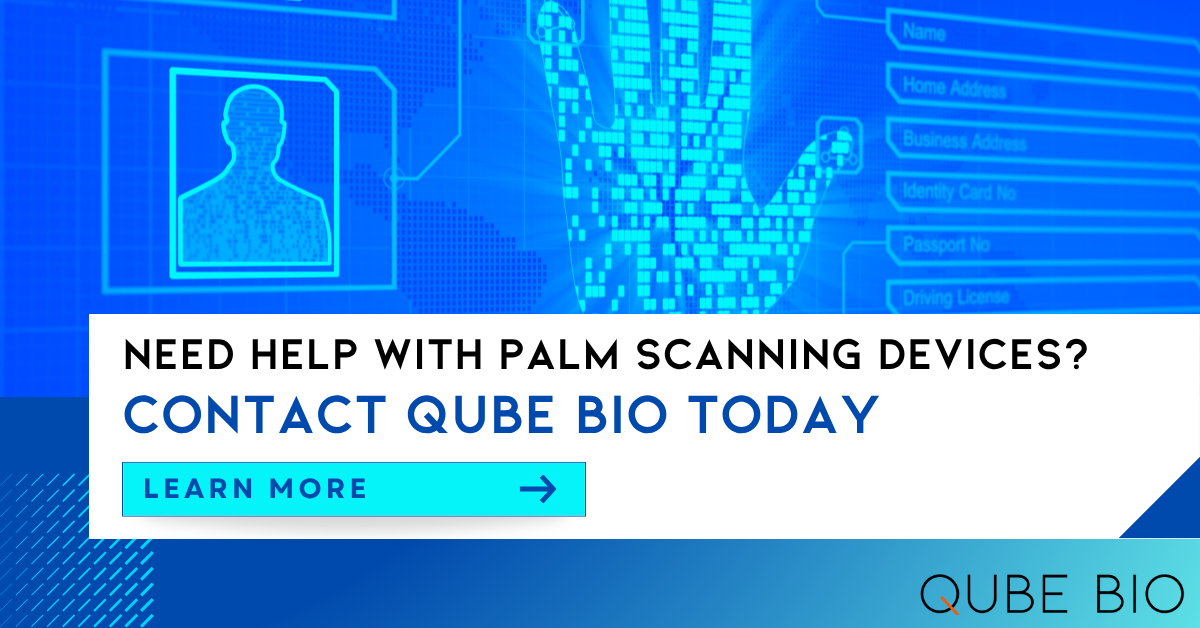Categories
Palm vein authentication is a cutting-edge biometric technology that uses near-infrared light to capture the unique vein patterns beneath the skin, offering a secure and non-invasive identification method. However, like any biometric system, it can encounter issues with palm vein false rejections—when legitimate users are incorrectly denied access.
These errors can frustrate users, disrupt operations, and undermine trust in the system. This article explores the causes of palm vein false rejections, provides actionable tips to enhance accuracy, and outlines best practices to optimize performance. Whether you’re implementing palm vein technology or troubleshooting an existing system, these strategies will help ensure reliable authentication.

False rejections in palm vein authentication occur when the system fails to recognize a registered user’s vein pattern, rejecting their attempt to gain access. This is often measured as the False Rejection Rate (FRR), a key metric in biometric systems.
A high FRR can result from various factors, including environmental conditions, user behavior, or technical limitations. Addressing these issues requires a deep understanding of how palm vein systems work and the variables that influence their performance.
Palm vein technology relies on near-infrared light to illuminate hemoglobin in the veins, creating a detailed map of the vein structure. This pattern is compared against a stored template to verify identity. The system’s accuracy depends on the quality of the captured image, the robustness of the matching algorithm, and the consistency of the user’s presentation.
To improve the accuracy of palm vein authentication systems, it’s critical to pinpoint the reasons behind false rejections, where legitimate users are incorrectly denied access. These errors, measured as the False Rejection Rate (FRR), can stem from environmental conditions, user behavior, technical constraints, or database management issues.
Understanding these causes in detail allows administrators to implement targeted solutions, enhancing system reliability and user experience. Below are the primary culprits, each with its specific impact on performance.
External conditions can significantly disrupt the ability of palm vein scanners to capture clear and accurate images, leading to palm vein false rejections.
Ambient light, particularly from near-infrared sources like sunlight or certain artificial lights, can interfere with the scanner’s near-infrared imaging process. This interference may distort the captured vein pattern, causing the system to fail in matching it against the stored template. For instance, a scanner placed near a window with strong daylight may struggle to isolate the vein structure, resulting in repeated rejections and user frustration.
Cold temperatures can cause blood vessels to constrict, reducing vein visibility and altering the captured pattern. This is particularly problematic in outdoor or unheated environments, where low temperatures may temporarily change the appearance of a user’s vein structure. For example, a user scanning their palm in a cold lobby during winter may experience rejections due to reduced blood flow, even if their vein pattern is registered correctly.
The way users interact with the palm vein scanner can introduce errors, often due to lack of familiarity or physiological factors.
If a user’s palm is misaligned, tilted, or positioned too far from or too close to the scanner, the system may capture an incomplete or distorted image, leading to a mismatch with the stored template. For example, a user who hovers their hand too high above the scanner may produce a low-quality scan, triggering a false rejection. This issue is common among new users unfamiliar with the system’s requirements.
Temporary physiological changes, such as swelling, dehydration, or minor injuries, can subtly alter the appearance of vein patterns, even though they are generally stable. For instance, dehydration from intense physical activity may reduce vein prominence, causing the scanner to reject a valid user. These changes, while temporary, can disrupt authentication until the user’s condition stabilizes or the system adapts.
The hardware and software components of palm vein systems play a critical role in their accuracy, and limitations in either can increase palm vein false rejections.
Older or less advanced scanners may lack the resolution or sensitivity needed to capture clear vein images, especially for users with less prominent vein patterns, such as those with thicker skin or lower blood flow. For example, a low-quality sensor might struggle to detect faint veins in an elderly user, leading to frequent rejections and reduced system reliability.
Matching algorithms that are overly strict may reject scans with minor variations, even if they belong to a legitimate user. For instance, slight changes in hand angle or blood flow could trigger a rejection if the algorithm demands near-perfect matches. This sensitivity can prioritize security but at the cost of usability, frustrating users with repeated denials.
The quality and maintenance of the biometric database directly impact authentication success, with poor management leading to persistent errors.
Although palm vein patterns are generally stable, physiological changes like significant weight gain or loss can subtly affect vein visibility or blood flow, causing mismatches with an outdated template. For example, a user who has gained substantial weight since enrollment may present a slightly altered vein pattern, leading to palm vein false rejections until the template is updated to reflect these changes.
Low-quality scans during the initial registration process, often due to improper hand positioning, poor lighting, or rushed enrollment, result in unreliable templates that hinder accurate matching. For instance, if a user’s enrollment scan is blurry due to movement, subsequent scans may consistently fail to match, increasing the likelihood of false rejections and requiring re-enrollment.
Reducing palm vein false rejections requires a multi-faceted approach that addresses environmental, user, and technical factors. Below are practical tips and best practices to improve the accuracy of palm vein authentication systems.
Creating an ideal environment for palm vein scanners is essential for consistent performance.
User behavior plays a significant role in the success of palm vein authentication. Proper training can minimize errors caused by incorrect usage.

Investing in high-quality equipment and robust algorithms can significantly reduce palm vein false rejections.
The quality of the initial enrollment process and ongoing template maintenance directly impacts system performance.
Conduct Thorough Enrollment:
Update Templates Regularly:
Validate Template Quality:
Continuous monitoring allows administrators to identify and address issues proactively, minimizing palm vein false rejections.
For organizations seeking to push the boundaries of palm vein accuracy, advanced techniques can further enhance performance and reduce palm vein false rejections.
Train machine learning models to recognize subtle variations in vein patterns, improving the system’s ability to handle physiological changes and reducing false rejections.
Implement algorithms that adjust matching thresholds based on contextual factors, such as user history or environmental conditions, to optimize accuracy.
Incorporate liveness detection to ensure the scanned palm is from a living person, reducing errors from spoofing attempts that could indirectly affect FRR.
Reducing palm vein false rejections is not just about improving technology—it’s about creating a seamless and trustworthy user experience. By optimizing the scanning environment, enhancing user training, upgrading hardware and software, and maintaining high-quality templates, organizations can significantly boost the accuracy of palm vein authentication systems.
Regular monitoring and advanced techniques like machine learning can further refine performance, ensuring the system remains reliable even as user needs evolve. With these best practices, palm vein technology can deliver on its promise of secure, efficient, and user-friendly biometric authentication, paving the way for widespread adoption in diverse applications.